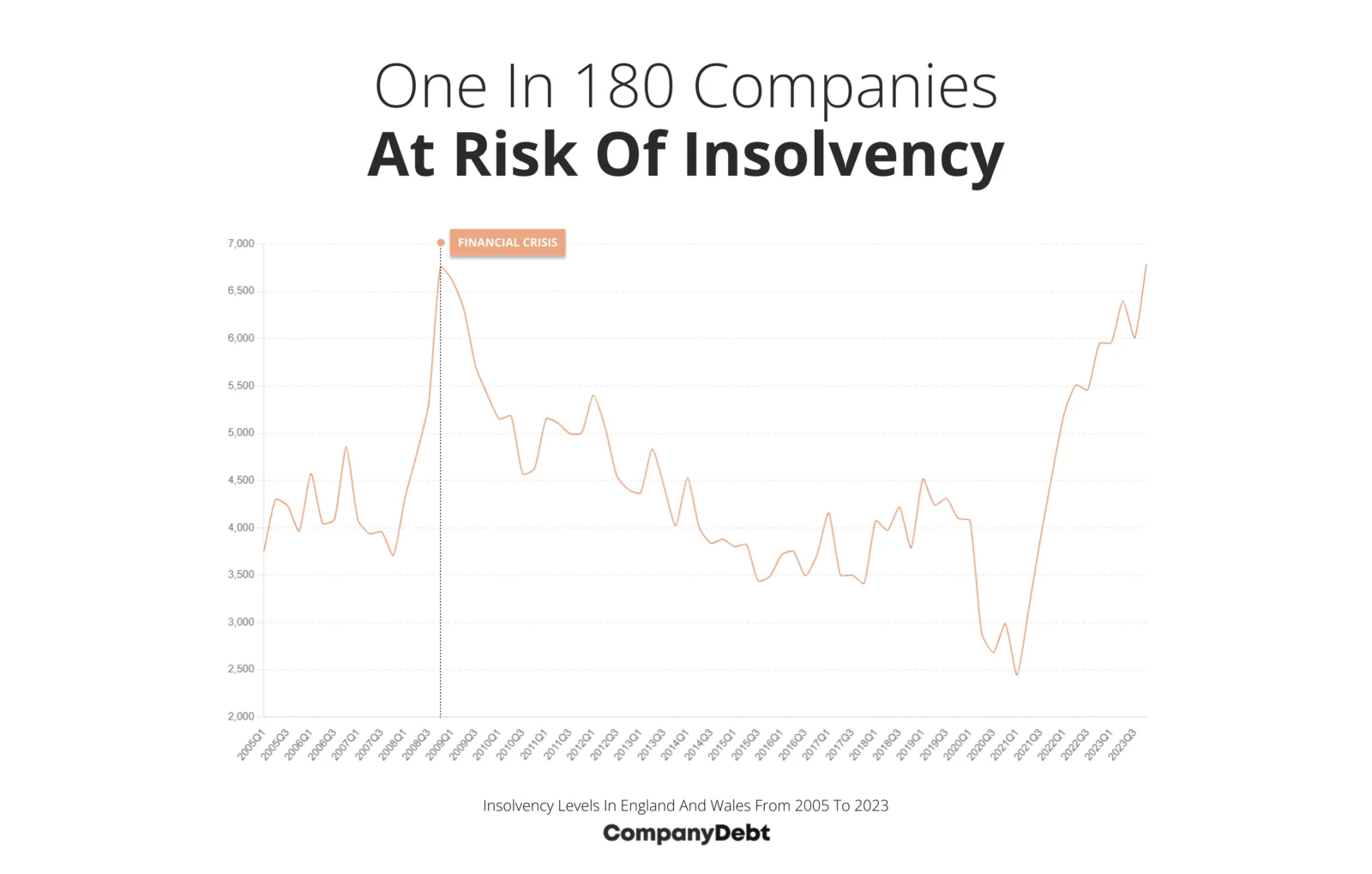
1 in 180 Companies Faces Insolvency in 2024
From 1 June 2023 to 31 May 2024, one in 180 companies on the Companies House effective register entered insolvency, approaching levels last seen during the 2008-09 recession.
UK insolvencies remain higher than those seen either during the COVID-19 pandemic or between 2014 and 2019, although now at just over 20% lower than the high of May 2023.

Company Insolvencies in 2024: Echoes of the 2008-09 Recession
Insolvency practitioner Chris Andersen commented on the troubling trend, stating:
“The significant rise in company insolvencies highlights the severe economic challenges businesses are facing in 2024. From post-pandemic recovery hurdles to increasing debt burdens and market volatility, many companies are struggling to maintain financial stability in these uncertain times. Heightened geopolitical risks, inflation, and upcoming elections are only adding to these pressures. It’s hardly surprising we’re seeing higher business insolvencies, especially for companies with a turnover of less than £1 million.”
The breakdown of these insolvencies includes a notable number of Creditors’ Voluntary Liquidations (CVLs), which have been a driving force behind the high insolvency rates[1]Trusted Source – GOV.UK – Company Insolvency Statistics May 2024.

Construction Industry Remains the Worst Hit
The construction industry continues to face significant challenges, as evidenced by the latest insolvency figures.
In the 12 months leading up to April 2024, the construction sector experienced the highest number of insolvencies, with 4,401 cases, accounting for 18% of all industry-captured insolvencies.
The top five industries (in accordance with SIC 2007) with the highest number of insolvencies were:
- Construction: 4,401 cases (18% of cases)
- Wholesale and retail trade; repair of motor vehicles and motorcycles: 3,906 cases (16% of cases)
- Accommodation and food service activities: 3,821 cases (15% of cases)
- Administrative and support service activities: 2,402 cases (10% of cases)
- Professional, scientific and technical activities: 2,026 cases (8% of cases)
Key Statistics and Comparisons
Despite these seemingly high insolvency volumes, it is important to consider the context. The number of companies on the Companies House register has increased significantly over time. Therefore, recent insolvency rates still remained much lower than the peak rate of 113.1 insolvencies per 10,000 companies on the effective register during the 2008/09 recession.
From 1 June 2023 to 31 May 2024, one in 180 companies entered insolvency, equating to a rate of 55.6 per 10,000 companies. This is a slight increase from the previous year’s rate of 54.2 per 10,000 but still considerably lower than the peak rate during the 2008-09 recession. This disparity highlights how the business landscape has evolved, with a much larger number of active companies today compared to the period of the last major economic downturn.
Breakdown of Insolvencies
In May 2024, the total number of registered company insolvencies in England and Wales was 2,006, consisting of:
- Compulsory Liquidations: 271
- Creditors’ Voluntary Liquidations (CVLs): 1,590
- Administrations: 126
- Company Voluntary Arrangements (CVAs): 19
The numbers of CVLs and administrations were lowe
The primary sources for this article are listed below, including the relevant laws and Acts which provide their legal basis.
You can learn more about our standards for producing accurate, unbiased content in our editorial policy here.
- Trusted Source – GOV.UK – Company Insolvency Statistics May 2024







